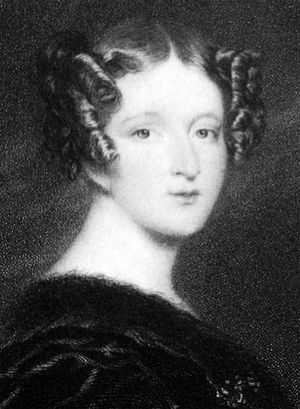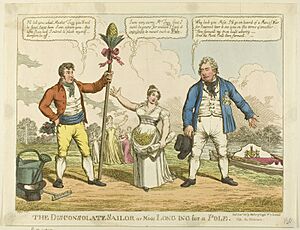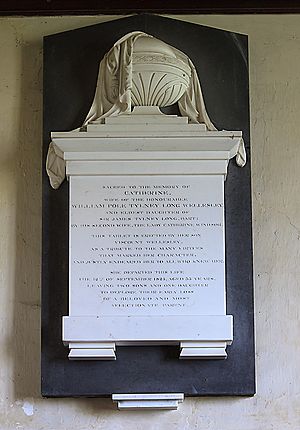Catherine Tylney-Long facts for kids
Catherine Tylney-Long (born October 2, 1789 – died September 12, 1825) was a very wealthy British woman in the 1800s. She was often called "The Wiltshire Heiress" because of her huge fortune.
Contents
Who Was Catherine Tylney-Long?
Catherine was born into a very rich family. Her father was Sir James Tylney-Long, a respected baronet from Wiltshire. She had an older brother named James.
Becoming a Rich Heiress
Sadly, Catherine's brother James passed away when he was almost eleven years old in 1805. This meant that Catherine inherited all of her family's vast estates and money. These properties were in places like Essex, Hampshire, and Wiltshire. She also received about £300,000 in financial investments, which was a huge amount of money back then.
Her estates brought in about £40,000 every year from rents. Because of this incredible wealth, Catherine became known in London society as "The Wiltshire Heiress." People believed she was the richest commoner (someone not from a royal family) in all of England.
Her Marriage and Family Life
Many important men wanted to marry Catherine because of her wealth. One of her suitors was the Duke of Clarence, who later became King William IV. He hoped to use her money to pay off his own large debts.
Catherine eventually chose to marry William Wesley-Pole. He added her family names, Tylney-Long, to his own name in 1812. They got married on March 14, 1812.
An Unhappy Marriage
Sadly, their marriage was not a happy one. William made many poor choices and was often unkind. This made Catherine's life very difficult.
In 1822, William got a special job as a Gentleman Usher for King George IV. This job protected him from being arrested for his debts. Around 1823, he left Britain to escape his many creditors (people he owed money to). While he was away, he started a relationship with another woman and completely abandoned Catherine.
Her Children and Legacy
Catherine passed away at the age of 35 in Richmond, Surrey. She had just received a letter from William, and its contents seemed to make her suddenly very ill. She left behind three children: William, James, and Victoria. Her two unmarried sisters, Dorothy and Emma, took care of the children.
William, her husband, only had the right to use Catherine's property during his lifetime. He was responsible for tearing down Wanstead House in 1825 to try and pay off some of his debts. He also tried, but failed, to gain custody of their oldest child, William, who had inherited Catherine's fortune.




